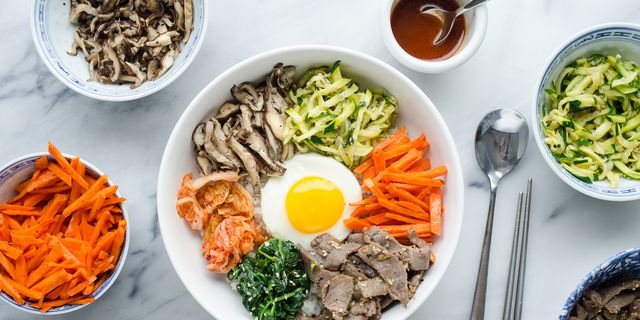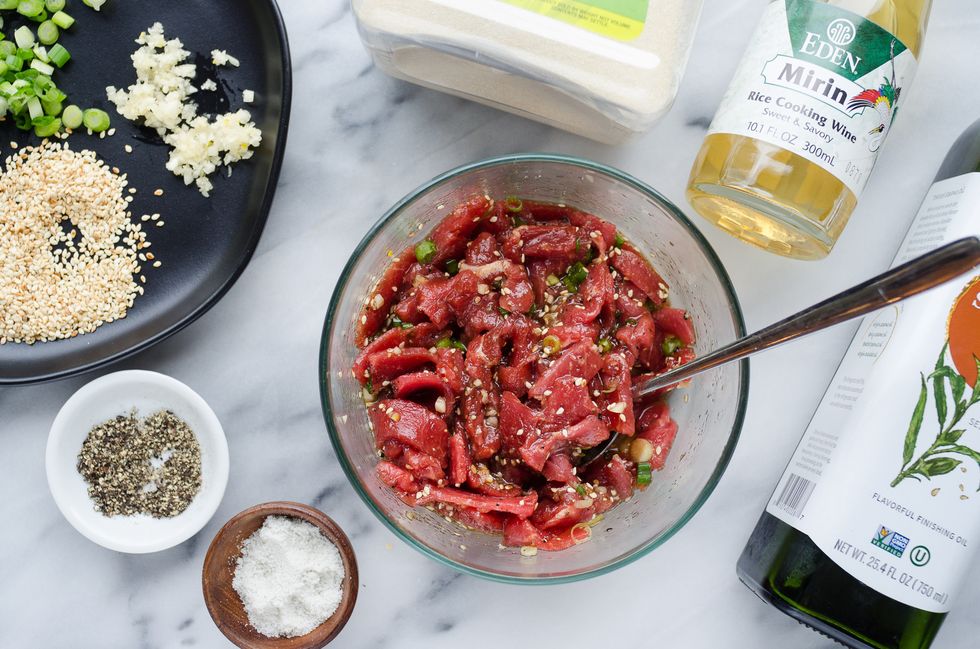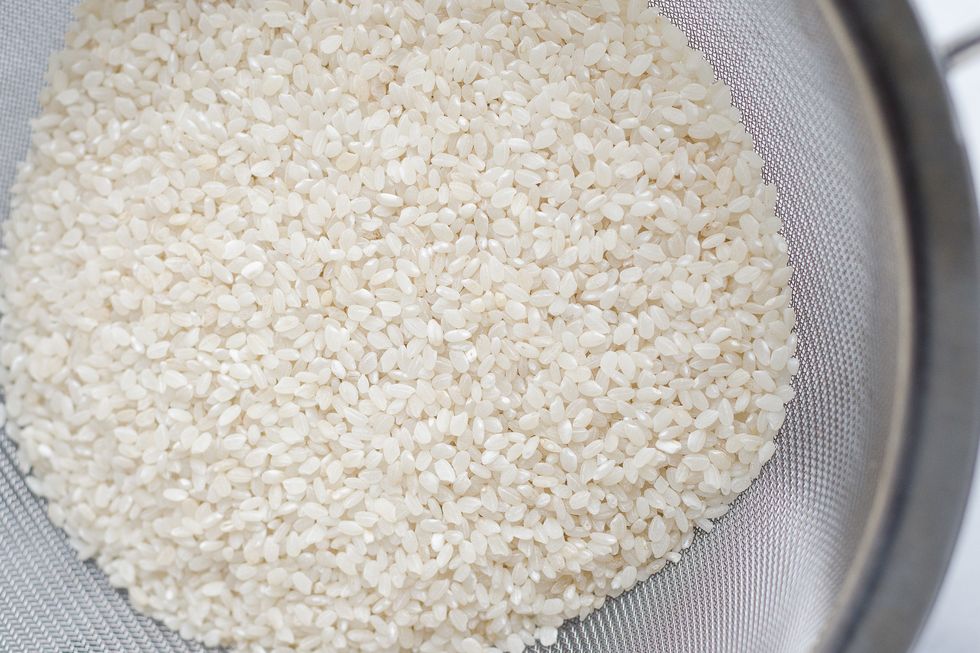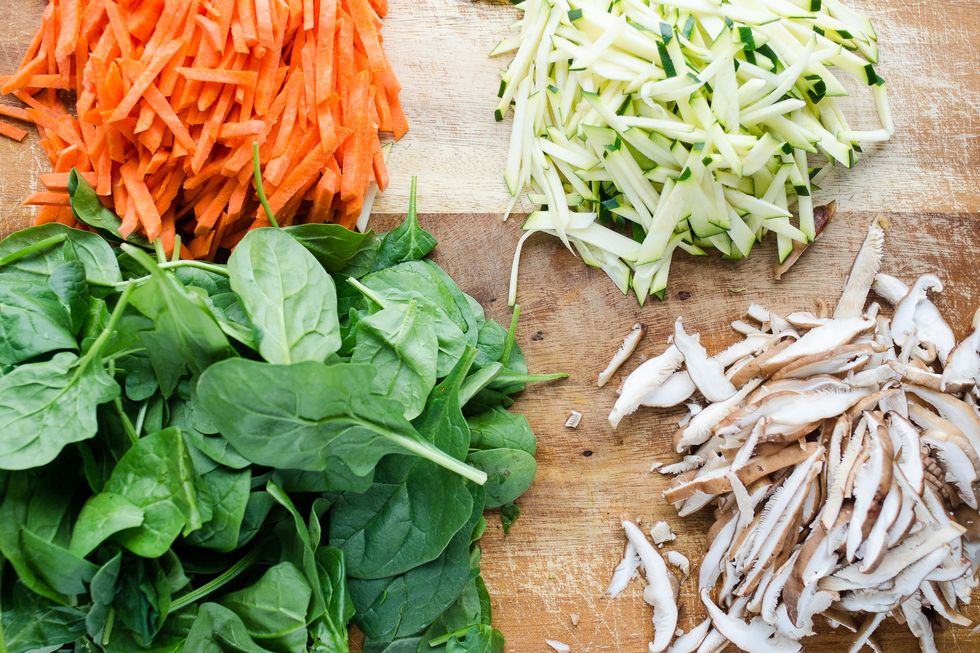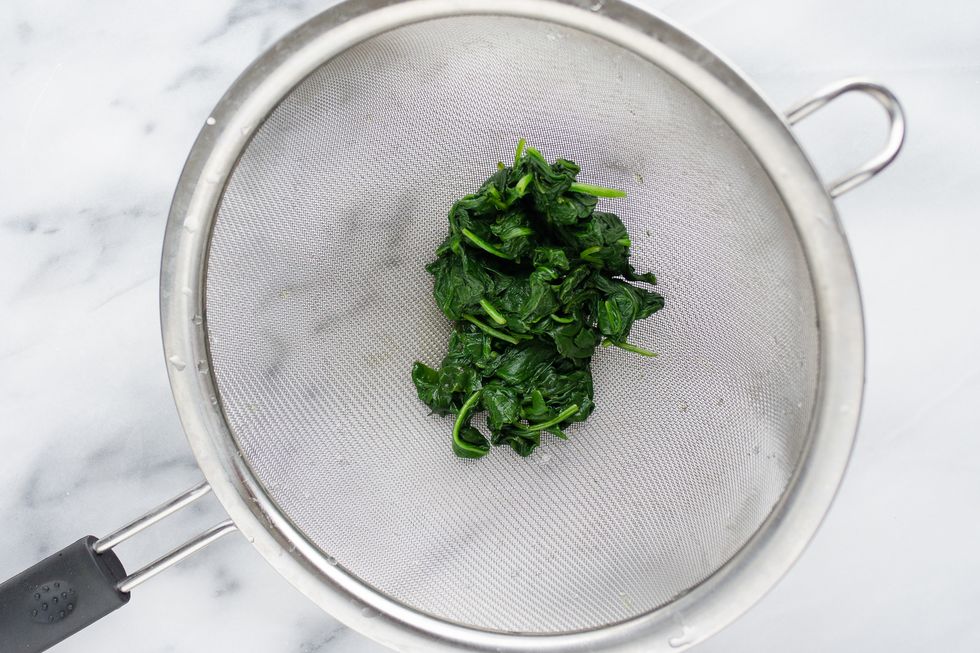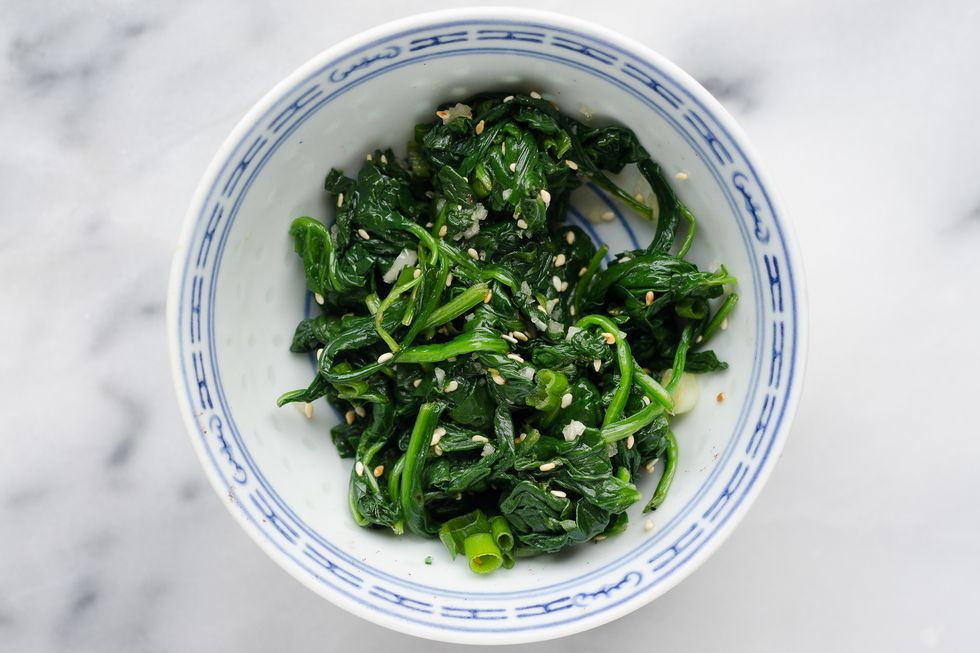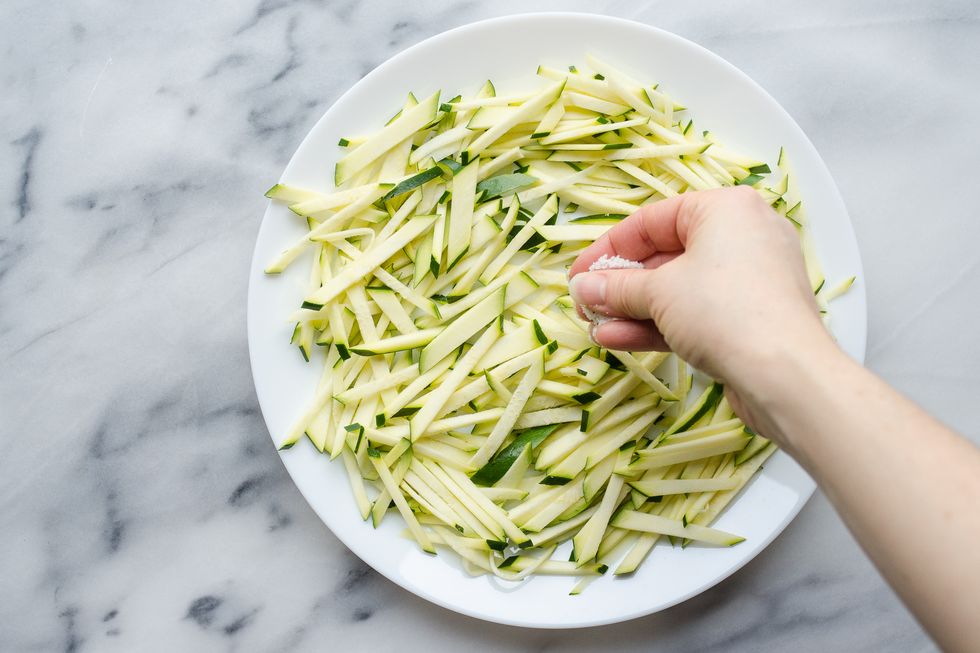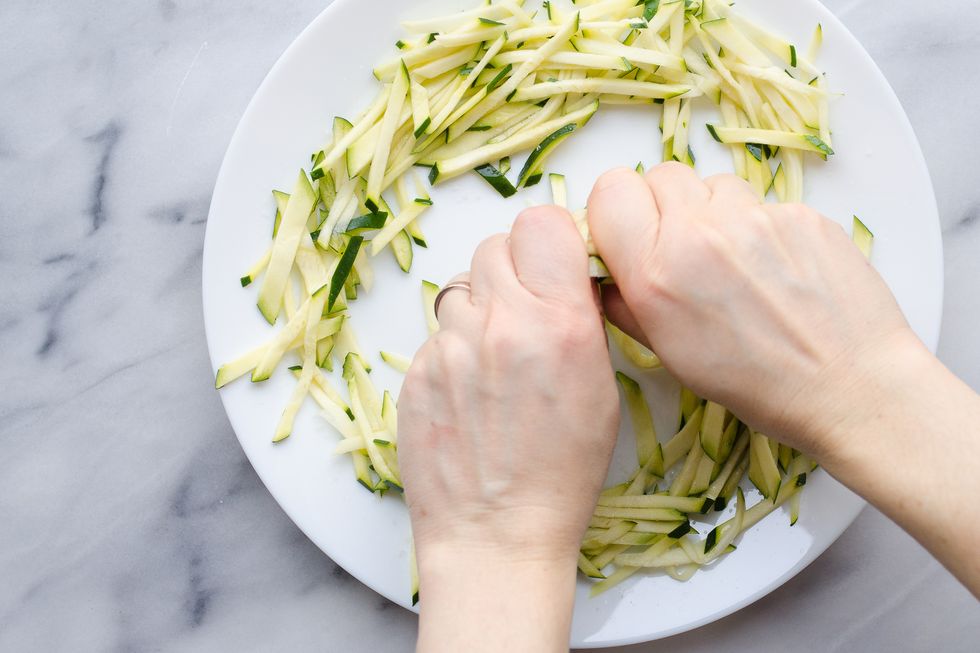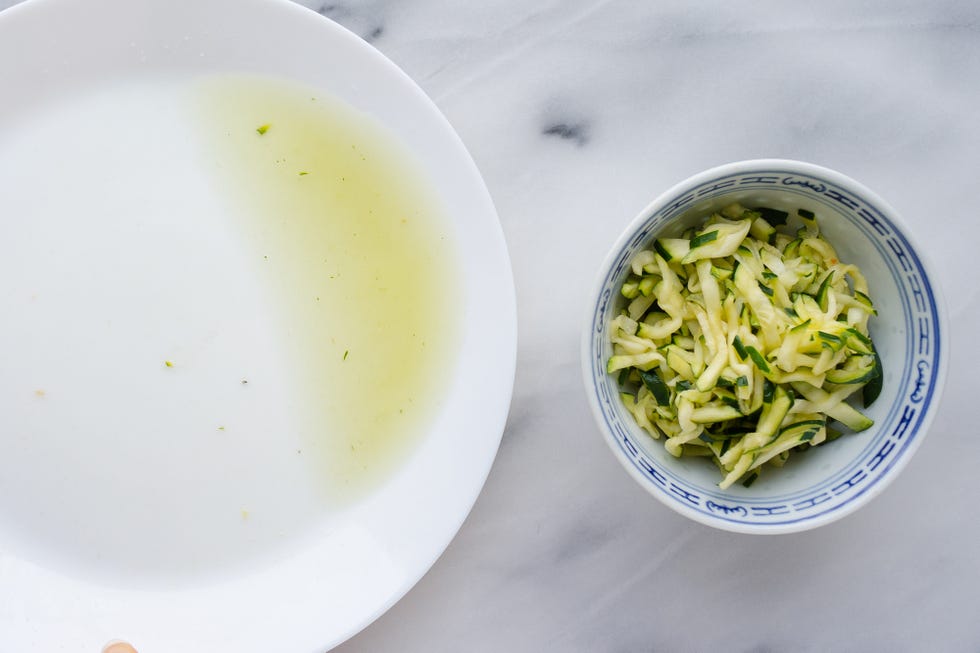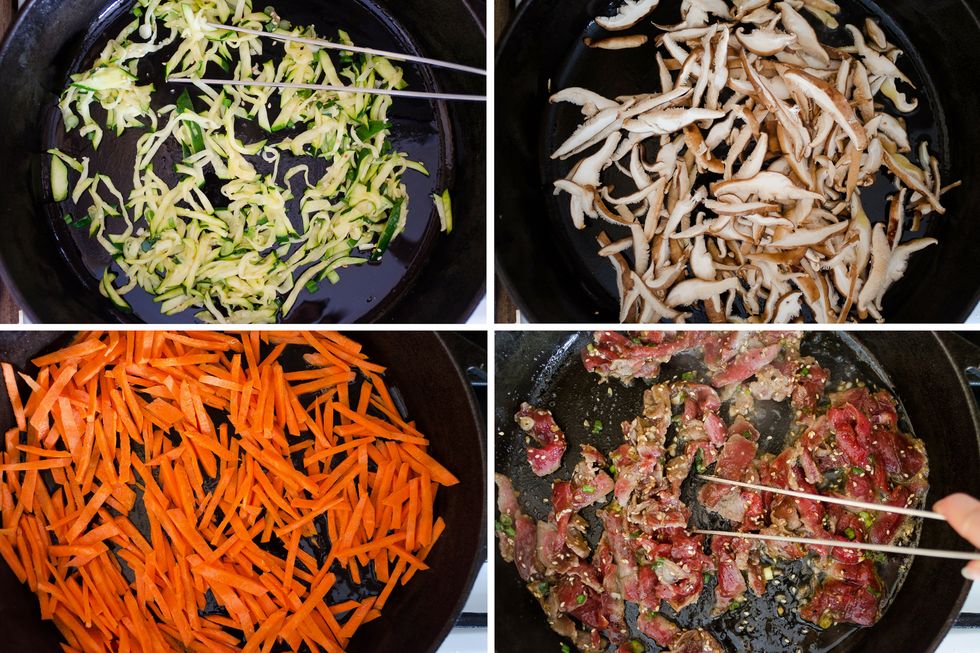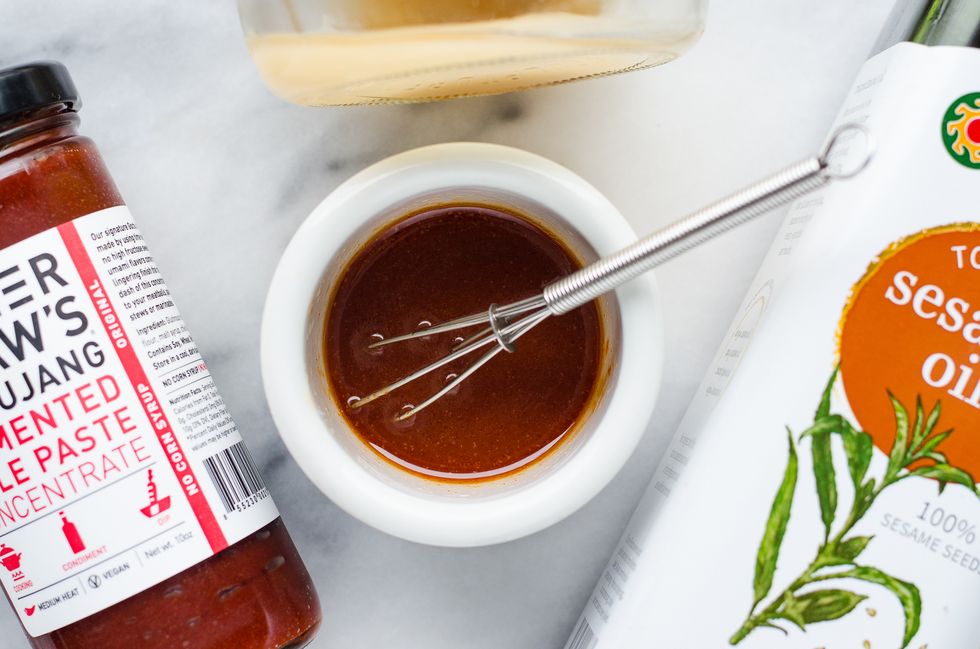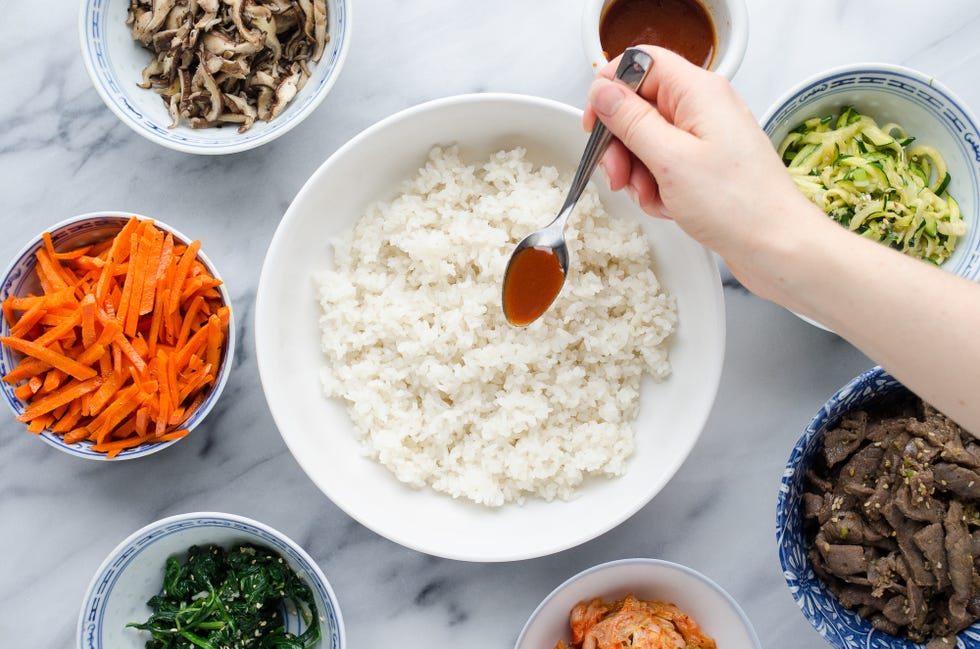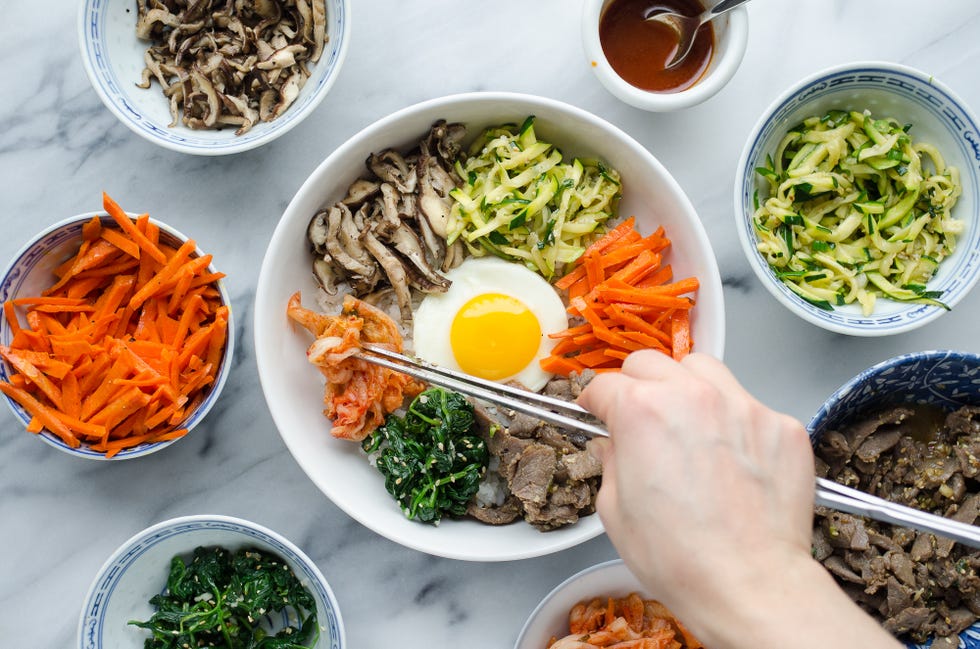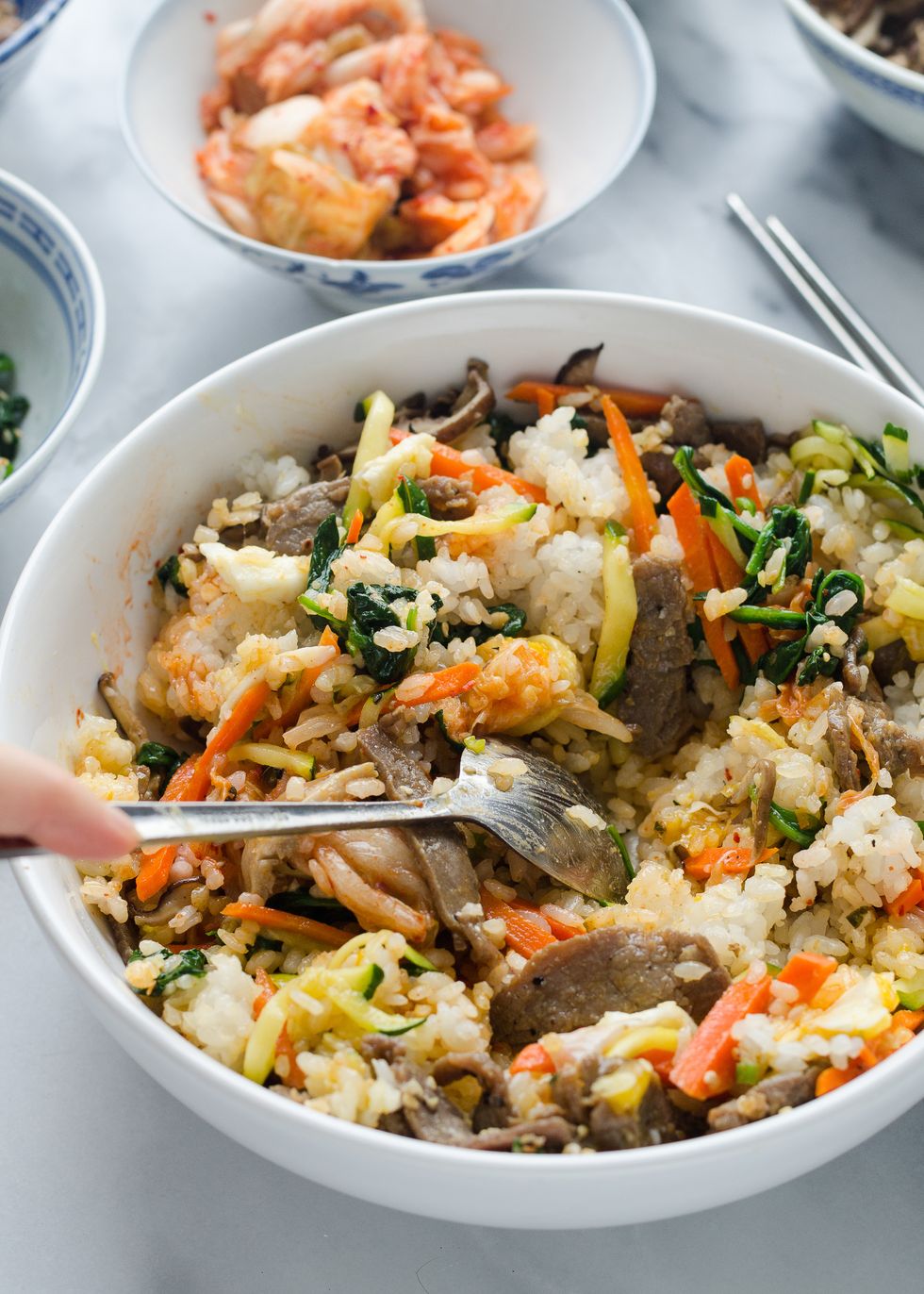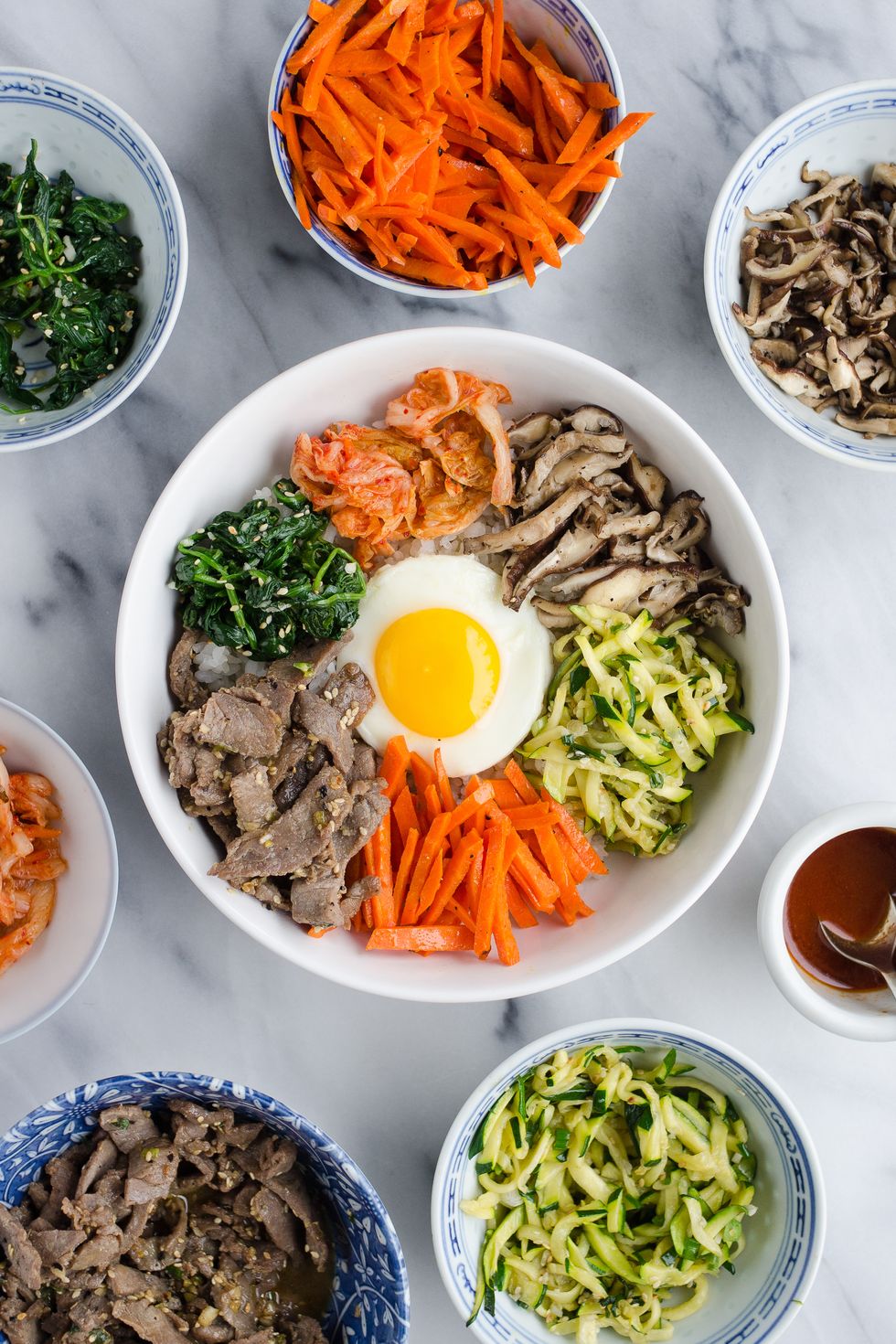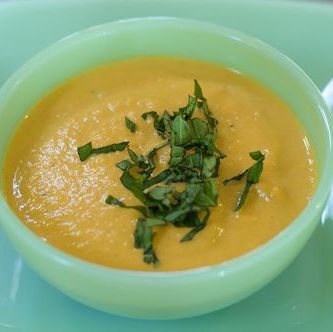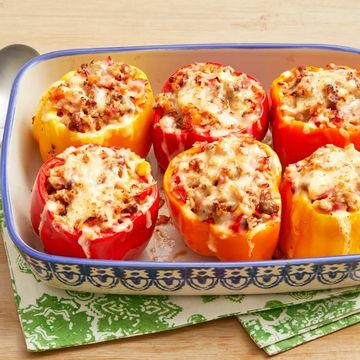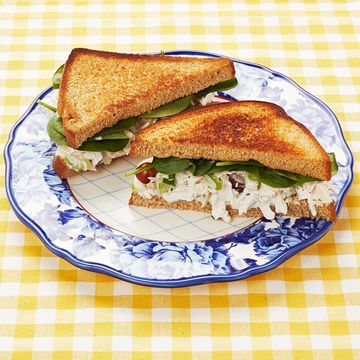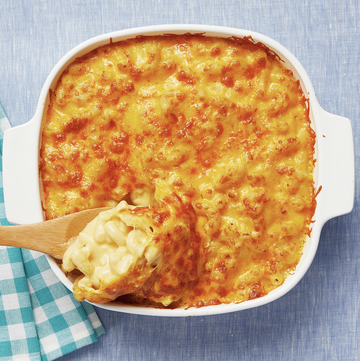We’re all food enthusiasts here, right? So I don’t feel too weird confessing that when I think about making/eating bibimbap, I get a little giddy and want to do a happy dance.
But first, a little background on what bibimbap is.
Bibimbap is a popular Korean dish. It translates to something like, “mixed rice.” It’s composed of rice topped with various side dishes (banchan), marinated beef, an egg, and a gochujang (고추장 or hot pepper paste) sauce.
It looks quite beautiful and complicated. But in reality, it’s fairly easy to make, and you can even do quite a bit of prep work ahead of time. That way you can just heat everything up and have it ready in a flash. It can also easily be made gluten-free by using tamari or coconut aminos instead of soy sauce. (Note that, though traditional gochujang, kimchi, and mirin are naturally gluten-free, some commercial versions may have added wheat. So check the ingredients if you need to avoid gluten.)
Disclaimer: I am not trying to say that my recipe is 100% authentic. I think it showcases some signature Korean flavors, but I’ve chosen to use ingredients that are readily available to most Americans.
Let’s dive in and see how bibimbap is made!
I think it’s a good idea to prep the seasoning ingredients first. We’ll be using these again and again while we make bibimbap to season various side dishes.
Slice a few green onions, mince some garlic, and toast some sesame seeds. Have these at the ready.
Next, you want to get your meat marinating. The longer you let it sit, the more flavorful the meat will be.
Make sure to slice your beef VERY thinly, and against the grain if you can (I have the hardest time telling which way the grain is going on a piece of meat!). It’s easiest to get thin slices if the beef is a bit frozen. Not straight-from-the-freezer, though.
You can sometimes find pre-sliced beef at the grocery store, or you can even ask the butcher to slice the meat for you. Just make sure to specify that you want it VERY thin.
Note: I have used both sirloin steak and NY strip steak. Both were good, but of course the NY strip steak was amazing. If you wait and buy it on sale, it’s a little more affordable.
Put the beef in the fridge to marinate while you prep the rest of the ingredients.
Next, get your rice going. For a more authentic Korean vibe, use short grain rice. I haven’t been able to find Korean rice where we live, so I just use sushi rice. You can definitely use long grain rice if that’s all you can find!
Make sure to rinse your rice well before cooking. Refer to my post on how to cook rice without a rice cooker for more tips on getting perfect rice.
Get all of your vegetables prepped by washing, peeling, slicing if needed.
Now let’s make the spinach. Bring a pot of water to a boil. Add the spinach and cook for only about half a minute. Strain, run under cold water, and squeeze out all of the excess water.
Season with scallions, garlic, sesame oil, sesame seeds, and salt and pepper.
This might seem a bit strange to you, but next we’re going to salt the zucchini. Lay it out flat on a plate, and generously sprinkle it with salt. Let it sit for about 10–15 minutes.
When you come back, the zucchini will be sweating drops of water. Squeeze the zucchini to get as much water out as you can.
See how much water I got out of it? Crazy, right?
Now it’s time to sauté all the veggies!
The secret to keeping the veggies brightly colored is to sauté them from light to dark.
Start with the zucchini, then the mushrooms, and do the carrots last. Carrots have a lot of color, and they will turn everything in the pan orange if you cook them first.
Lastly, cook the beef. Keep an eye on it—it’s easy to overcook since it’s so thinly sliced!
Finally, make the bibimbap sauce. Mix together some gochujang, sugar (I have also used maple syrup, which makes the sauce thinner), toasted sesame oil, and soy sauce. If you’re feeling lazy, you can just use gochujang and not fuss with making the sauce.
Gochujang is easy to find in most grocery stores these days, but you can use Sriracha instead if you can’t locate it.
To assemble, place a good amount of rice in a bowl. I like to put the sauce down first before the other toppings so it soaks into the rice, but you can wait until the end if you prefer.
Note: You can put all of the vegetables on one plate instead of in individual bowls as I’ve done here. I just find that it’s easier to keep them separate for presentation purposes.
Put a sunny-side-up egg in the middle.
Arrange the vegetables around the egg. For the prettiest presentation, make sure that side dishes of the same color are not touching each other. For example, I did brown mushrooms, green zucchini, orange carrots, then brown beef, green spinach, orange kimchi.
Kimchi (김치) has become quite popular, so you should be able to find it in most grocery stores! Look in the produce section near other Asian ingredients.
This is the part where I get overly excited. Do you know how difficult it was not to shove my face into this while I was photographing it?
Now, bibimbap means mixed rice, so you’re supposed to mix everything together before you eat it. It’s always kind of sad to see the beautiful arrangement get destroyed … until you start to eat it!
Notes:
- Koreans don’t always make bibimbap all fancy. They sometimes just throw a bunch of vegetables or side dishes that are sitting in their fridge on some rice and call it a meal! So don’t feel like you have to make a super professional presentation to enjoy bibimbap.
- It’s more traditional to serve bibimbap with raw beef and a raw egg, but I’m a bit squeamish, so I cook mine.
- The marinade for the beef calls for mirin, which is a rice wine. You can substitute rice vinegar in a pinch.
- There are many more vegetables that you can use besides the ones I’ve shown here. Bean sprouts are popular, but I don’t care for them so I left them out.
- You can also make a cucumber side dish by preparing it exactly the same as the zucchini, but leave it raw instead of sautéing it.
- To make things easier on yourself, you can throw all of the veggies into the pan instead of sautéing them individually. Then just season the whole thing with soy sauce, sesame oil, sesame seeds, garlic, and scallions. It won’t be nearly as pretty, but it will still taste wonderful.
- To make this a feasible weeknight dinner, you can prep everything ahead of time. In fact, I would recommend making a double batch of everything so you can cook once, eat twice. Cook the veggies and meat and make the sauce. Then all that’s left to do is make the rice, fry the eggs, and reheat the veggies and meat.
When you look at the recipe for Bibimbap, you’re going to think that it has a million ingredients. That’s not the case: the same ingredients are just used multiple times!
It was a toss-up for me whether to list the ingredients singly, or multiple times for each side dish. In the end I chose to list them multiple times for ease of reading the recipe, but I decided to also include a short list of the ingredients below so you can quickly see what you’ll need to buy.
Shopping list:
- avocado oil or ghee, for frying
- 2 cups short grain rice
- 2 teaspoons salt
- 8 ounces beef steak (sirloin or NY strip work well)
- 6 cups spinach
- 1 medium zucchini
- 4 ounces shiitake mushrooms
- 2 medium carrots
- 3 scallions
- 3 1/2 teaspoons minced garlic
- 1 tablespoons toasted sesame seeds
- 2 tablespoons soy sauce
- 2 tablespoons plus 2 teaspoons toasted sesame oil
- 2 tablespoons sugar
- salt and pepper to taste
- 1 tablespoon gochujang (고추장)
- 4 fried eggs, for serving
- kimchi (김치) for serving
Now go forth and conquer bibimbap! Bonus points if you enjoy it while watching the Olympics.
